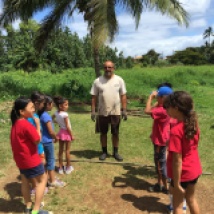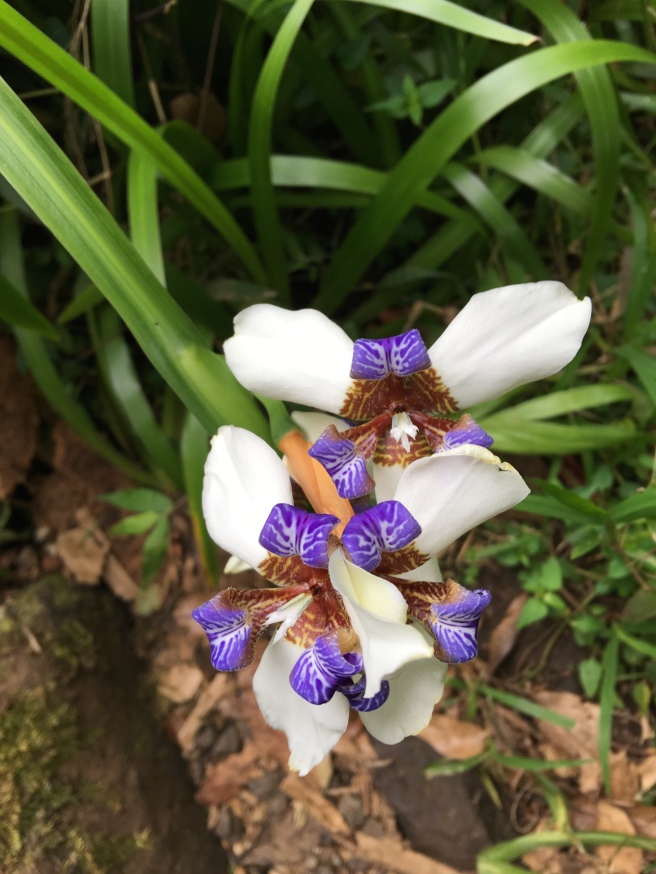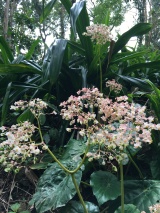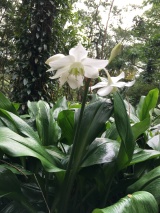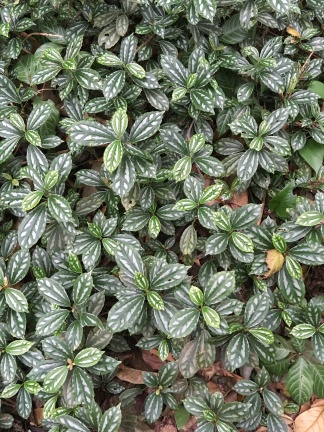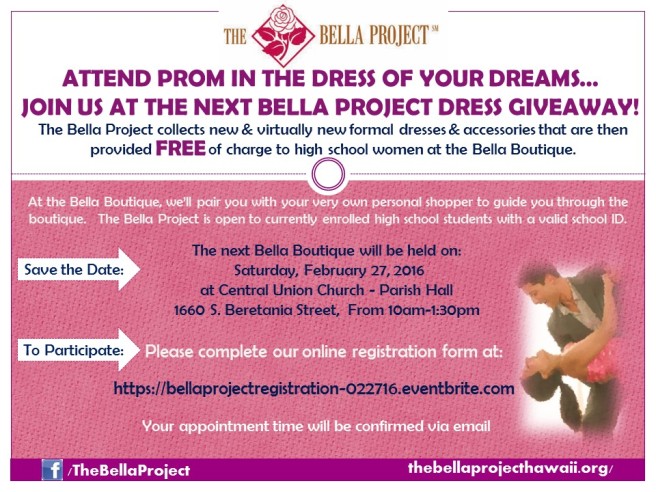
Why would I want to go into a cryotherapy chamber? I don’t like the cold. I can’t even stand to go into the produce refrigerator at Costco, but, there was a part of me that was curious. What are the health benefits? How does it work? Is it safe? — were just some of the questions I wanted answered.
On Monday, January 18th, professional athlete and owner of Egan’s Training Center, Egan Inoue and Dr. Craig Haga, will hold the Grand Opening of CRYO Therapy Hawaii. Some of us who train at his gym, were able to get a pre-opening treatment. I decided to make an appointment and see what the big deal is all about. Floyd Mayweather, LeBron James, and Kobe Bryant are a few professional athletes that opt for the chilly sci-fi cylinder to boost their athletic performance.I chose a whole body and facial spot treatment. Here is what I learned during my time there:
History
Cryotherapy began in Japan, developed in Europe and migrated to the United States. Treatment is intended to address pain and inflammation for sports injuries, fibromyalgia, rheumatoid arthritis, multiple sclerosis and skin conditions. Providers of cryotherapy are usually physical therapists, chiropractors, athletic trainers, and holistic healers.(wholebodycryotherpy.org)
How does it work?
“With Whole Body Cryotherapy (WBC) the body is exposed to ultra-low temperatures, triggering a systematic anti-inflammatory response. This modality was first utilized in Japan in 1978 to treat rheumatoid arthritis. Studies conducted over the last two decades have established WBC as a powerful treatment for inflammatory disorders and injuries. The accelerated production of collagen improves skin elasticity and texture, reversing skin aging and the appearance of cellulite.” (CRYO Therapy Hawaii brochure)
What are the health benefits?
Immune system – Cryotherapy improves the function of the immune system and decreases stress levels.
Skin – Exposure to temperature -160 degrees Celsius (-256 degrees Fahrenheit) triggers the systemic release of anti-inflammatory cytokines, and decreases circulating pro-inflammatory cytokines. This internal response decreases inflammation in all areas of the body.
Musculoskeletal – The anti-inflammatory and analgesic properties of cryotherapy can drastically improve joint disorders such as rheumatoid arthritis and osteoporosis. Athletes use whole body therapy to recover from injuries and improve their performance.
Endocrine – The exposure to extreme cold causes the body to turn up its metabolic rate in order to produce heat. This effect lasts for up to 42 hours after the procedure, causing the body to burn up to 800 calories following the procedure. After several procedures. The increase in metabolic rate tends to last longer. Another “survival reaction” to the extreme cold temperatures is the release of endorphins (hormones) that have analgesic and anti-inflammatory properties, and improve mood disorders. (CRYO Therapy Hawaii brochure)
Is it safe?
Based on my experience, I felt the process to be comfortable and safe. I could see why you would never do it alone. Many express concern because of the recent death of Chelsea Ake-Savacion. Although there are not many details known about her death, we do know she was alone. There is a door that latches shut and a hydraulic that lifts you up so that you end up shoulder deep in the chamber when doing the whole body cryotherapy treatments. The controls are all on the outside. So if you are in a cryotherapy chamber, you cannot access the control panels located outside, which are operated by a staff member who is with you throughout the process.
When in doubt, it is wise to consult a physician before trying the therapy. I asked one client who came for a shoulder injury about her doctor’s opinion. Her doctor had no reservations about her doing the therapy and said she could do it an unlimited amount of times as long she found it helpful.
What to expect from whole body cryotherapy
Women have the option of going in nude. Most women go in their undies, bikini, or sports bra. It’s good to have a lot of skin exposure. Men can go in undies and/or shorts.
When you arrive at CRYO Therapy Hawaii, you will be given a cotton robe, gloves, socks and some slip on shoes to cover your feet. You want to protect your little digits. Thus, no “naked time” for the guys. Egan being Egan (meaning – he’s CRAZY, DO NOT TRY THIS), said he tried “naked time” and simply put, he said, “It hurts.”
When you get into the large cylinder chamber, the door will be closed, and at that time, you will take off your robe. A staff member on the outside will be operating the functions of the chamber. The floor beneath you in the chamber will lift until you are shoulder deep in the chamber and you can see above its rim. The nitrogen will have already started to fill the chamber. They kept me in for about 90 seconds. You can move around, dance, or talk to staff and other clients waiting to make the time go by faster. However, it really didn’t seem long at all. At -250 degrees Fahrenheit, it sounds very uncomfortable, but I didn’t think so. My legs felt it the most, cold and tingly. Other clients said their legs felt “crunchy.” You can go in for another treatment soon after, which Egan recommends, to receive maximum benefits. Before going in for another treatment (which I did) I had to wait for my body temperature to go back to 80 degrees Fahrenheit. The reason for this is for skin safety. This time, my legs felt a bit colder.
It took a good 20-30 minutes for my core to cool down. They gave me a cup of tea and I was still shivering while I was drinking it outside in the sun at high noon. I felt really good throughout the rest of my day and slept soundly that night. The benefit of the therapy lasts up to 42 hours after the session, fighting inflammation and burning extra calories.
Spot treatment
Right after the whole body treatment I did the spot treatment for the face head and neck. In the spot treatment room, there is a large white comfy chair that the client lays in on their back. There is the machine, also known as “the elephant,” that blows nitrogen vapors through a hose. Marcia (Egan’s wife and former competitive gymnast) administered my treatment. She started in the scalp area, which felt really good. When she got to my face, it took a little getting used to. I could feel the skin tightening as the super cold vapors were blowing around my face. The benefits were much more apparent with this treatment. My skin felt much tighter and smoother instantly.
My take on cryotherapy
Although I cannot comment on the long term benefits, I did feel it alleviated tightness in my neck and shoulders. The staff at CRYO Therapy Hawaii has a lot of fun and they make the clients feel at home. It’s super quick, so it’s not like a massage experience that is longer and you can relax and maybe even take a nap. If you are looking for an anti-aging, weight loss, or anti-inflammation regiment, this is a great option. I will definitely go again.
Information
CRYO Therapy Hawaii, by Egan Inoue
2600 South King Street, Suite K106
Honolulu, HI 96826
808-397-6407
Hours of Operation: Monday – Friday 10 a.m. – 6 p.m. and Saturday 10 a.m. – 4 p.m.
www.cryotherapyhawaii.com
 The line was long but moved very quickly.
The line was long but moved very quickly. My kids loved the many giant interactive screens. For this one, my younger son, Cameron had his face scanned and put into a walrus. The walrus makes faces, blows bubbles, and eats food that you can release by pressing the food button.
My kids loved the many giant interactive screens. For this one, my younger son, Cameron had his face scanned and put into a walrus. The walrus makes faces, blows bubbles, and eats food that you can release by pressing the food button. This interactive screen switches peoples faces.
This interactive screen switches peoples faces.






































 A warped panoramic of the famous Shibuya crossing.
A warped panoramic of the famous Shibuya crossing. 


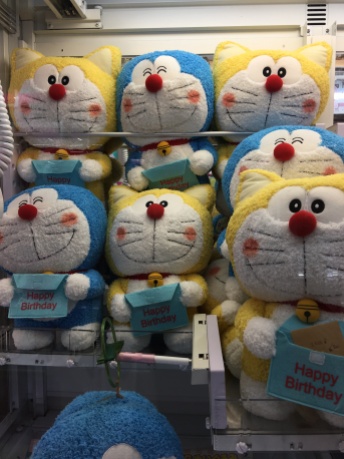

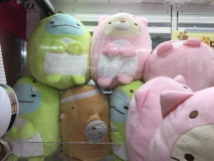









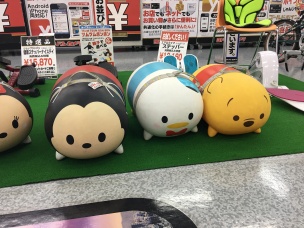













 On a cool, breezy day, under the beautiful blue Hale’iwa sky, the 4th grade class of my son’s elementary school presented an ‘oli (chant) to humbly request Aunty Nona, Kumu Mokihana, Aunty Lisa, as well as, spiritual ancestors to share knowledge with them.
On a cool, breezy day, under the beautiful blue Hale’iwa sky, the 4th grade class of my son’s elementary school presented an ‘oli (chant) to humbly request Aunty Nona, Kumu Mokihana, Aunty Lisa, as well as, spiritual ancestors to share knowledge with them.









